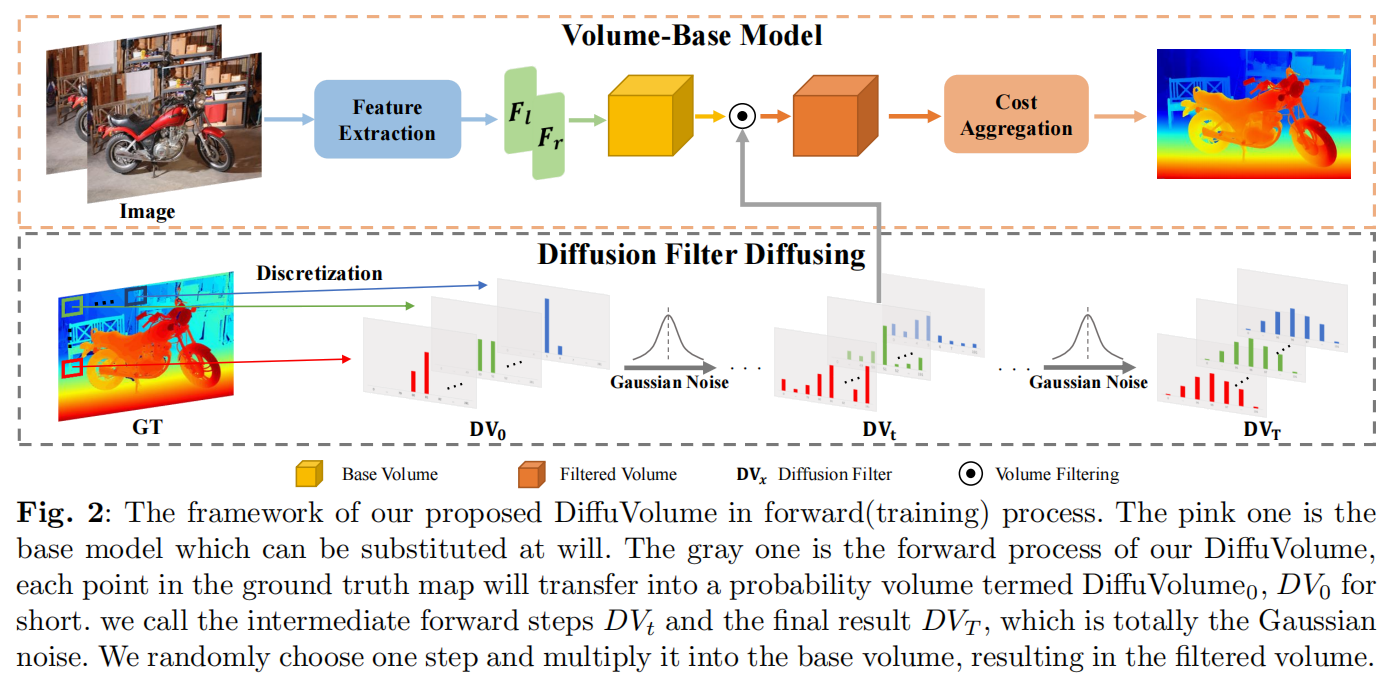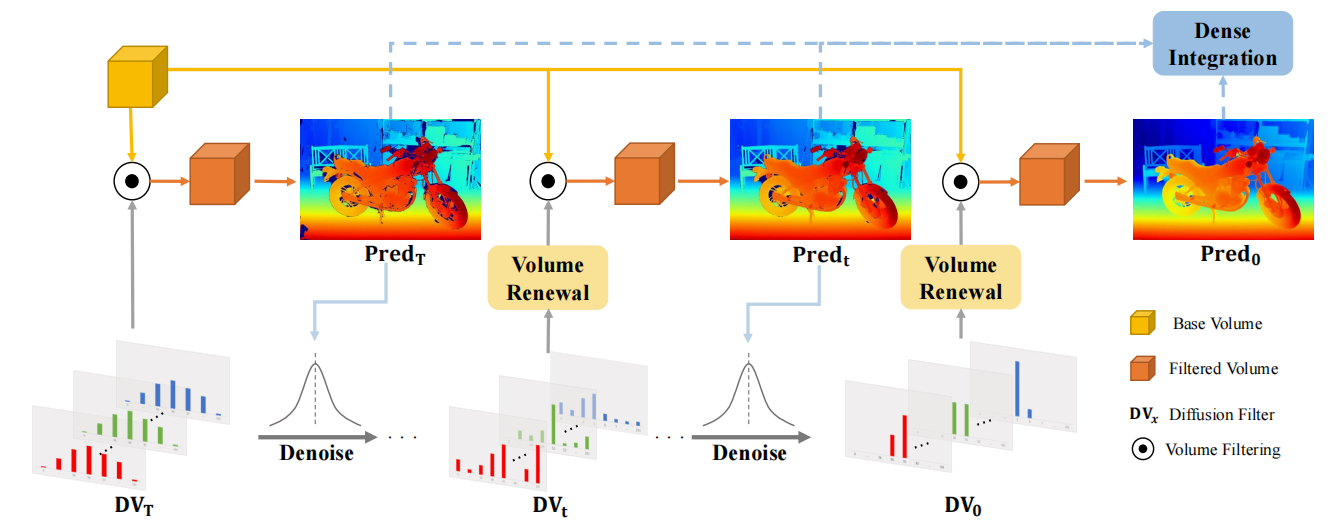DiffuVolume: Diffusion Model for Volume based Stereo Matching
Official PyTorch Implementation of DiffuVolume.
[2024.05.06] We refine our code for better user experience
[2024.03.17] The pretrained weights of DiffuVolume are released in link1
[2024.03.16] The whole training and testing codes are released!!!
[2023.08.31] Our DiffuVolume paper is submitted to IJCV
Cost Volume-based stereo matching methods need to build a redundant cost volume, which interferes with the model training and limitting the performance. In this work, we build a volume filter based on diffusion model, named DiffuVolume, which only uses the diffusion algorithm but not the heavy U-Net network to iteratively remove the redundant information in the cost volume. By adding the DiffuVolume into well-performed methods, we outperform all the published volume-based methods on Scene Flow, KITTI and zero-shot benchmarks.
- Python 3.8
- Pytorch 2.0
conda create -n diffuvolume python=3.8
conda activate diffuvolume
conda install pytorch torchvision torchaudio cudatoolkit=11.3 -c pytorch -c nvidia
pip install opencv-python
pip install scikit-image
pip install tensorboard
pip install matplotlib
pip install tqdm
Download Scene Flow Datasets, KITTI 2012, KITTI 2015
Our DiffuVolume is a plug-and-play module for existing volume-based methods. Here we show the code trained on Scene Flow, KITTI2012, and KITTI2015
Scene Flow (using pretrained model on ACVNet)
cd SceneFlow
python main.py
KITTI2012 (using pretrained model on PCWNet)
cd KITTI12
python main.py
KITTI2015 (using pretrained model on IGEV-Stereo)
cd KITTI15
sh run.sh
Scene Flow
cd SceneFlow
python test_sceneflow_ddim.py
python save_disp_sceneflow.py
KITTI2012
cd KITTI12
python test.py
python save_disp_sceneflow_kitti12.py
KITTI2015
cd KITTI15
sh run.sh
python save_disp.py
| Method | D1-bg (All) | D1-fg (All) | D1-all (All) | Runtime (s) |
|---|---|---|---|---|
| DiffuVolume | 1.35 % | 2.51 % | 1.54 % | 0.18 |
| IGEV | 1.38 % | 2.67 % | 1.59 % | 0.18 |
| ACVNet | 1.37 % | 3.07 % | 1.65 % | 0.20 |
| GwcNet | 1.74 % | 3.93 % | 2.11 % | 0.32 |
| PSMNet | 1.86 % | 4.62 % | 2.32 % | 0.41 |
| Method | EPE (px) | Bad1.0 | Runtime (s) | Params (M) |
|---|---|---|---|---|
| DiffuVolume | 0.46 | 4.97 % | 1.11 | 7.23 |
| DDPM | 0.59 | 6.06 % | 265 | 60.07 |
| DDIM | 0.63 | 6.13 % | 1.21 | 60.07 |
We show the zero-shot generalization results of our DiffuVolume compared with current SOTA methods IGEV.
If you find this project helpful in your research, welcome to cite the paper.
@article{zheng2023diffuvolume,
title={DiffuVolume: Diffusion Model for Volume based Stereo Matching},
author={Zheng, Dian and Wu, Xiao-Ming and Liu, Zuhao and Meng, Jingke and Zheng, Wei-shi},
journal={arXiv preprint arXiv:2308.15989},
year={2023}
}
Thanks to Gangwei Xu for opening source of his excellent works ACVNet and IGEV-Stereo. Our work is inspired by these works and part of codes are migrated from ACVNet, IGEV.
Thanks to Zhelun Shen for opening source of his excellent works PCWNet. Our work is inspired by this work and part of codes are migrated from PCWNet.
Please contact Dian Zheng if there are any questions (1423606603@qq.com or zhengd35@mail2.sysu.edu.cn).


